Episodes
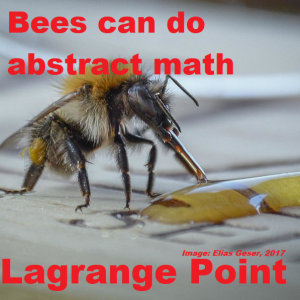
Monday May 27, 2019
Episode 328 - Mathematics and Nature, from Bees to Choruses of Frogs
Monday May 27, 2019
Monday May 27, 2019
Mathematics is not just something humans can perform. It's present across the universe and especially in nature. So can animals understand abstract mathematical concepts? Can we learn from the different complicated algorithms and mathematical models used by animals to improve the internet of things? What can social media help tell us about both human and animal tourists to nature reserves?
References:
- Scarlett R. Howard, Aurore Avarguès-Weber, Jair E. Garcia, Andrew D. Greentree, Adrian G. Dyer. Numerical cognition in honeybees enables addition and subtraction. Science Advances, 2019; 5 (2): eaav0961 DOI: 10.1126/sciadv.aav0961
- Ikkyu Aihara , Daichi Kominami , Yasuharu Hirano and Masayuki Murata. Mathematical modelling and application of frog choruses as an autonomous distributed communication system. Royal Society Open Science, 2019 DOI: 10.1098/rsos.181117
- Anna Hausmann, Tuuli Toivonen, Christoph Fink, Vuokko Heikinheimo, Henrikki Tenkanen, Stuart H.M. Butchart, Thomas M. Brooks, Enrico Di Minin. Assessing global popularity and threats to Important Bird and Biodiversity Areas using social media data. Science of The Total Environment, 2019; DOI: 10.1016/j.scitotenv.2019.05.268
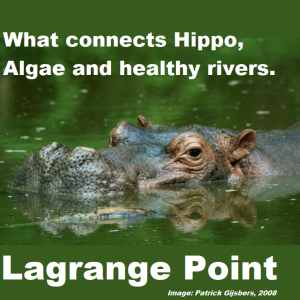
Monday May 20, 2019
Episode 327 - Hippos and Algae, Lions and Porcupines, plus Narwhals.
Monday May 20, 2019
Monday May 20, 2019
What connects Hippos, Algae and keeping the rivers of Africa healthy? What causes Lions to square-off against Porcupines? What is keeping the Narwhal population healthy despite it's genetic diversity? We look at the strange interconnection between species and how small changes in one ecosystem can destabilise a whole species.
Hippos help keep the rivers and lakes of Africa healthy...through their poo.
Hippos are essential in pumping silicon from the savannah into the rivers and lakes of Africa.
Lions hunt lots of creatures, but what needs to happen for them to try attacking a Porcupine?
Porcupines vs Lion sounds like a March Mammal Madness battle, but what causes a Lion to go after such a tough prey?
The Narwhals population is rebounding but it its still at risk due to it's shallow gene pool.
Can a species survive with a shallow gene pool?
References:
- Schoelynck, J., Subalusky, A.L., Struyf, E., Dutton, C.L., Unzué-Belmonte, D., Van de Vijver, B., Post, D.M., Rosi, E.J., Meire, P., Frings, P. Hippos (Hippopotamus amphibius): The animal silicon pump. Science Advances, 2019 DOI: 10.1126/sciadv.aav0395
- Julian C. Kerbis Peterhans, Gastone G. Celesia, Thomas P. Gnoske. Lion-Porcupine Interactions in Africa, Including Impacts on Lion Predatory Behavior. Journal of East African Natural History, 2019; 108 (1): 1 DOI: 10.2982/028.108.0101
- Westbury, M.V. Narwhal genome reveals long-term low genetic diversity despite current large abundance size. iScience, 2019 DOI: 10.1016/j.isci.2019.03.023
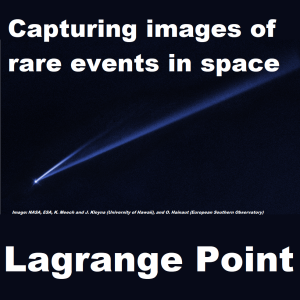
Monday Apr 15, 2019
Episode 322 - Imaging strange objects in space (and on earth)
Monday Apr 15, 2019
Monday Apr 15, 2019
Taking images of strange objects in space is incredibly complicated and requires both large telescopes, and even larger teams of scientists to pour over the data. Techniques, codes and algorithms to sift through that data to find the unusual patterns is an incredibly difficult and challenging task. However with it we can capture some incredible things whether it be images of black holes, to asteroids literally spinning themselves apart, or even missing endangered species here on earth.
References:
- Iowa State University. (2019, March 27). Data flows from NASA's TESS Mission, leads to discovery of Saturn-sized planet. ScienceDaily. Retrieved April 13, 2019 from www.sciencedaily.com/releases/2019/03/190327174701.htm
- NASA/Goddard Space Flight Center. (2019, March 28). Hubble watches spun-up asteroid coming apart. ScienceDaily. Retrieved April 13, 2019 from www.sciencedaily.com/releases/2019/03/190328112601.htm
- British Ecological Society. (2019, April 9). Astro-ecology: Counting orangutans using star-spotting technology: A collaboration between astrophysicists, conservationists and ecologists aims to save rare and endangered animals. ScienceDaily. Retrieved April 13, 2019 from www.sciencedaily.com/releases/2019/04/190409083245.htm
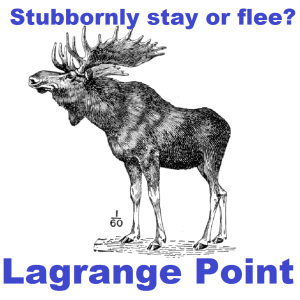
Monday Mar 18, 2019
Episode 318 - Stubborn Moose, repulsive smells and Otters with tools
Monday Mar 18, 2019
Monday Mar 18, 2019
We recap March Mamma Madness Round 1, and look at some latest science stories that relate. From what happens inside your brain when you smell a repulsive smell, to making the right call on fleeing or standing your ground. Plus we look at using archaeological techniques to help understand the history of animal tool use like with otters.
References:
- Ahmed A. M. Mohamed, Tom Retzke, Sudeshna Das Chakraborty, Benjamin Fabian, Bill S. Hansson, Markus Knaden, Silke Sachse. Odor mixtures of opposing valence unveil inter-glomerular crosstalk in the Drosophila antennal lobe. Nature Communications, 2019; 10 (1) DOI: 10.1038/s41467-019-09069-1
- Michael Haslam, Jessica Fujii, Sarah Espinosa, Karl Mayer, Katherine Ralls, M. Tim Tinker, Natalie Uomini. Wild sea otter mussel pounding leaves archaeological traces. Scientific Reports, 2019; 9 (1) DOI: 10.1038/s41598-019-39902-y
- B. A. Oates, J. A. Merkle, M. J. Kauffman, S. R. Dewey, M. D. Jimenez, J. M. Vartanian, S. A. Becker, J. R. Goheen. Antipredator response diminishes during periods of resource deficit for a large herbivore. Ecology, 2019; e02618 DOI: 10.1002/ecy.2618
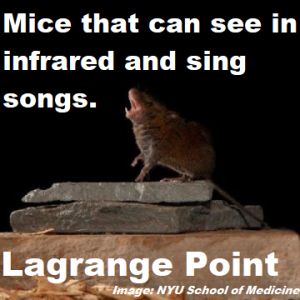
Monday Mar 04, 2019
Monday Mar 04, 2019
We preview 2019 March Mammal Madness, and find out about interesting animals from across the world. We look at ways to augment vision to help see in infra-red, and use singing mice to study human conversation. Plus we find out about balancing predators and prey.
References:
- March Mammal Madness
- Yuqian Ma, Jin Bao, Yuanwei Zhang, Zhanjun Li, Xiangyu Zhou, Changlin Wan, Ling Huang, Yang Zhao, Gang Han, Tian Xue. Mammalian Near-Infrared Image Vision through Injectable and Self-Powered Retinal Nanoantennae. Cell, 2019; DOI: 10.1016/j.cell.2019.01.038
- Matthew T. Farr, David S. Green, Kay E. Holekamp, Gary J. Roloff, Elise F. Zipkin. Multispecies hierarchical modeling reveals variable responses of African carnivores to management alternatives. Ecological Applications, 2019; 29 (2): e01845 DOI: 10.1002/eap.1845
- Daniel E. Okobi Jr., Arkarup Banerjee, Andrew M. M. Matheson, Steven M. Phelps, Michael A. Long. Motor cortical control of vocal interaction in neotropical singing mice. Science, 2019 DOI: 10.1126/science.aau9480

Monday Feb 11, 2019
Episode 313 - Cross continent pop hits from whales and deep divers
Monday Feb 11, 2019
Monday Feb 11, 2019
The greatest pop hits can cross continents, but what about oceans? We all know whales make songs, but not only are they very complex, they can be covered, repeated and spread like a Number 1 summer hit across oceans to the far flung corners of the globe. Plus reaching the deepest depths of the ocean is tough for humans, but easy for whales. How do they accomplish these great feats? We also touch on the impact of naval sonar on the battle between squids and whales.
Reference:
- Jeanne M. Shearer, Nicola J. Quick, William R. Cioffi, Robin W. Baird, Daniel L. Webster, Heather J. Foley, Zachary T. Swaim, Danielle M. Waples, Joel T. Bell, Andrew J. Read. Diving behaviour of Cuvier's beaked whales ( Ziphius cavirostris ) off Cape Hatteras, North Carolina. Royal Society Open Science, 2019; 6 (2): 181728 DOI: 10.1098/rsos.181728
- Melinda L. Rekdahl, Ellen C. Garland, Gabriella A. Carvajal, Carissa D. King, Tim Collins, Yvette Razafindrakoto, Howard Rosenbaum. Culturally transmitted song exchange between humpback whales (Megaptera novaeangliae) in the southeast Atlantic and southwest Indian Ocean basins. Royal Society Open Science, 2018; 5 (11): 172305 DOI: 10.1098/rsos.172305
- Brandon L. Southall, Kelly J. Benoit-Bird, Mark A. Moline, David Moretti. Quantifying deep-sea predator-prey dynamics: Implications of biological heterogeneity for beaked whale conservation. Journal of Applied Ecology, 2019; DOI: 10.1111/1365-2664.13334

Monday Feb 11, 2019
Episode 313 - Cross continent pop hits from whales and deep divers
Monday Feb 11, 2019
Monday Feb 11, 2019
The greatest pop hits can cross continents, but what about oceans? We all know whales make songs, but not only are they very complex, they can be covered, repeated and spread like a Number 1 summer hit across oceans to the far flung corners of the globe. Plus reaching the deepest depths of the ocean is tough for humans, but easy for whales. How do they accomplish these great feats? We also touch on the impact of naval sonar on the battle between squids and whales.
Reference:
- Jeanne M. Shearer, Nicola J. Quick, William R. Cioffi, Robin W. Baird, Daniel L. Webster, Heather J. Foley, Zachary T. Swaim, Danielle M. Waples, Joel T. Bell, Andrew J. Read. Diving behaviour of Cuvier's beaked whales ( Ziphius cavirostris ) off Cape Hatteras, North Carolina. Royal Society Open Science, 2019; 6 (2): 181728 DOI: 10.1098/rsos.181728
- Melinda L. Rekdahl, Ellen C. Garland, Gabriella A. Carvajal, Carissa D. King, Tim Collins, Yvette Razafindrakoto, Howard Rosenbaum. Culturally transmitted song exchange between humpback whales (Megaptera novaeangliae) in the southeast Atlantic and southwest Indian Ocean basins. Royal Society Open Science, 2018; 5 (11): 172305 DOI: 10.1098/rsos.172305
- Brandon L. Southall, Kelly J. Benoit-Bird, Mark A. Moline, David Moretti. Quantifying deep-sea predator-prey dynamics: Implications of biological heterogeneity for beaked whale conservation. Journal of Applied Ecology, 2019; DOI: 10.1111/1365-2664.13334
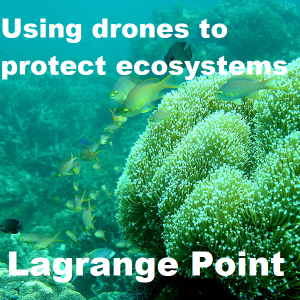
Monday Dec 24, 2018
Episode 306 - Drones as a force for good and evil
Monday Dec 24, 2018
Monday Dec 24, 2018
Drones being used for good, and drones being used for evil. We look at ways that drones can help biologists protect, treat, regrow marine damaged ecosystems. Including IVF transplants for the Great Barrier Reef, sea-grass disease hunting drones and even drones to detect camouflaged birds in forests. We also look into the science behind drone defense and how we can protect our critical infrastructure from rogue drones.
References:
- Hartley, A. (2018, November 27). This attempt to save the reef is the largest, most complicated coral regeneration project ever. Retrieved from https://www.abc.net.au/news/2018-11-27/reef-ivf-unprecedented-new-approach-could-save-dying-coral-reefs/10557718
- Hegranes, J. (2018, January 26). The Past, Present And Future Of Anti-Drone Tech. Retrieved from https://www.forbes.com/sites/forbestechcouncil/2018/01/26/the-past-present-and-future-of-anti-drone-tech/#845428852d62
- Minogue, K. (2018, September 17). Smithsonian Environmental Research Center. Retrieved from https://serc.si.edu/media/press-release/eelgrass-wasting-disease-has-new-enemies-drones-and-artificial-intelligence
- Vincent, J. (2015, December 11). Tokyo police unveil net-wielding interceptor drone. Retrieved from https://www.theverge.com/2015/12/11/9891128/tokyo-interceptor-net-drone
- Shewring, M. (2018, December 13). Drones can detect protected night jar nests (S. Weiss, Ed.). Retrieved from https://www.britishecologicalsociety.org/drones-nightjar-nests/
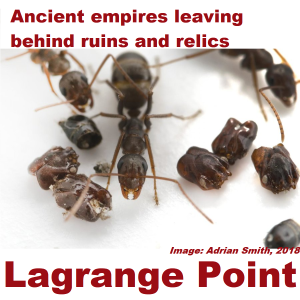
Monday Nov 26, 2018
Monday Nov 26, 2018
This week we find out about ancient empires which have changed the face of the planet, changed the climate and left behind trophies of their conquests. From pyramid building termites in Brazil, to large climate changing colonies in Spain and even David vs Goliath battles in Florida with trophies of the dead.
- Stephen J. Martin, Roy R. Funch, Paul R. Hanson, Eun-Hye Yoo. A vast 4,000-year-old spatial pattern of termite mounds. Current Biology, 2018; 28 (22): R1292 DOI: 10.1016/j.cub.2018.09.061
- David Martín-Perea, Omid Fesharaki, M. Soledad Domingo, Sara Gamboa, Manuel Hernández Fernández. Messor barbarus ants as soil bioturbators: Implications for granulometry, mineralogical composition and fossil remains extraction in Somosaguas site (Madrid basin, Spain). CATENA, 2019; 172: 664 DOI: 10.1016/j.catena.2018.09.018
- Adrian A. Smith. Prey specialization and chemical mimicry between Formica archboldi and Odontomachus ants. Insectes Sociaux, 2018; DOI: 10.1007/s00040-018-0675-y
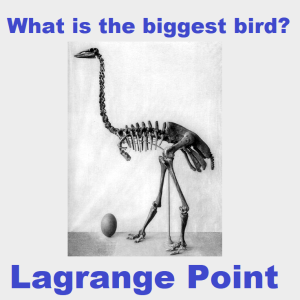
Monday Oct 01, 2018
Episode 294 - What is the biggest bird; Island Giants and dwarfs.
Monday Oct 01, 2018
Monday Oct 01, 2018
What is the biggest bird? Why do some species in some locations end up becoming giants? What makes islands like Madagascar so special and why are so many of the species once found there so very large in size? This week we look at island gigantism and island dwarfism across the world with a focus on the giant Elephant birds of Madagascar.
References:
- James P. Hansford, Samuel T. Turvey. Unexpected diversity within the extinct elephant birds (Aves: Aepyornithidae) and a new identity for the world's largest bird. Royal Society Open Science, 2018; 5 (9): 181295 DOI: 10.1098/rsos.181295
- James Hansford, Patricia C. Wright, Armand Rasoamiaramanana, Ventura R. Pérez, Laurie R. Godfrey, David Errickson, Tim Thompson, Samuel T. Turvey. Early Holocene human presence in Madagascar evidenced by exploitation of avian megafauna. Science Advances, 2018; 4 (9): eaat6925 DOI: 10.1126/sciadv.aat6925

Monday Aug 27, 2018
Monday Aug 27, 2018
How do you defend against invaders in a millenia long war? Well Koala DNA is currently using some ancient DNA weapons to fight back against a viral invader. We also find out about some unlikely alliances from different corals teaming up, to how bacteria manages to spread and colonize from place to place. All this and more this week on Lagrange Point.
References:
- Ulrike Löber, Matthew Hobbs, Anisha Dayaram, Kyriakos Tsangaras, Kiersten Jones, David E. Alquezar-Planas, Yasuko Ishida, Joanne Meers, Jens Mayer, Claudia Quedenau, Wei Chen, Rebecca N. Johnson, Peter Timms, Paul R. Young, Alfred L. Roca, Alex D. Greenwood. Degradation and remobilization of endogenous retroviruses by recombination during the earliest stages of a germ-line invasion. Proceedings of the National Academy of Sciences, 2018; 201807598 DOI: 10.1073/pnas.1807598115
- Inês S. Pais, Rita S. Valente, Marta Sporniak, Luis Teixeira. Drosophila melanogaster establishes a species-specific mutualistic interaction with stable gut-colonizing bacteria. PLOS Biology, 2018; 16 (7): e2005710 DOI: 10.1371/journal.pbio.2005710
- Luigi Musco, Tomás Vega Fernández, Erik Caroselli, John Murray Roberts, Fabio Badalamenti. Protocooperation among small polyps allows the coral Astroides calycularis to prey on large jellyfish. Ecology, 2018; DOI: 10.1002/ecy.2413
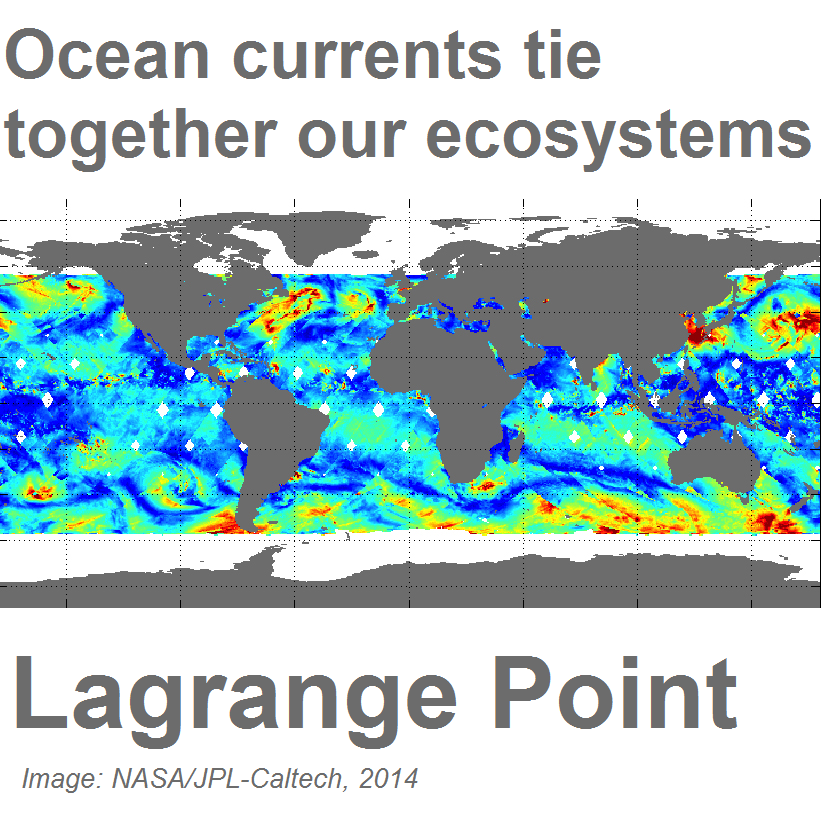
Monday Jul 02, 2018
Monday Jul 02, 2018
This week we look into three stories about how oceans tie our planet together. Our ecosystems are often linked in unusual ways that are not immediately obvious. Ocean currents can tie ecosystems across the world together, impacting migratory species, local environments and ecosystems. Sometimes these impacts are short term, other times they play out over years, decades and centuries.
References:
- Carl J. Reddin, Ádám T. Kocsis, Wolfgang Kiessling. Marine invertebrate migrations trace climate change over 450 million years. Global Ecology and Biogeography, 2018; DOI: 10.1111/geb.12732
- Hector M. Guzman, Catalina G. Gomez, Alex Hearn, Scott A. Eckert. Longest recorded trans-Pacific migration of a whale shark (Rhincodon typus). Marine Biodiversity Records, 2018; 11 (1) DOI: 10.1186/s41200-018-0143-4
- Jocelyn Champagnon, Jean-Dominique Lebreton, Hugh Drummond, David J. Anderson. Pacific Decadal and El Niño oscillations shape survival of a seabird. Ecology, 2018; 99 (5): 1063 DOI: 10.1002/ecy.2179
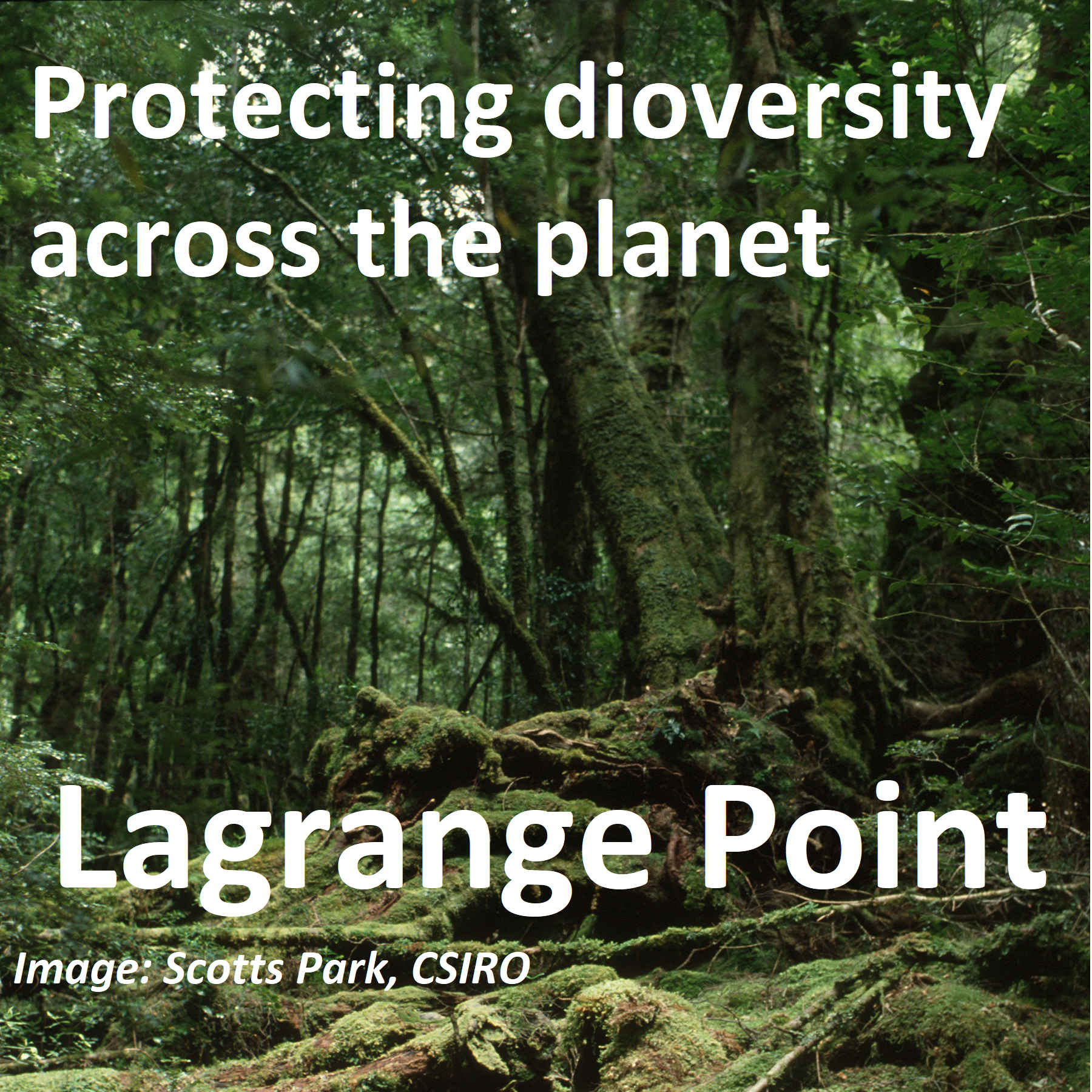
Monday May 21, 2018
Episode 275 - Protecting biodiversity and ecosystems in flux
Monday May 21, 2018
Monday May 21, 2018
Protecting biodiversity is important, but how well have we protected our critical zones over the past 25 years? Are predators invading human spaces or are they just reclaiming their old territory? What about places where the predator / prey balance is out of whack? We dive into biodiverse ecosystems across the world.
References:
-
Kendall R. Jones, Oscar Venter, Richard A. Fuller, James R. Allan, Sean L. Maxwell, Pablo Jose Negret, James E. M. Watson. One-third of global protected land is under intense human pressure. Science, 2018; 360 (6390): 788 DOI: 10.1126/science.aap9565
-
Brian R. Silliman, Brent B. Hughes, Lindsay C. Gaskins, Qiang He, M. Tim Tinker, Andrew Read, James Nifong and Rick Stepp. Are the Ghosts of Nature's Past Haunting Ecology Today? Current Biology, 2018 DOI: 10.1016/j.cub.2018.04.002
-
Michigan Technological University. (2018, May 17). After 60 years, Isle Royale continues world's longest predator-prey study. ScienceDaily. Retrieved May 19, 2018 from www.sciencedaily.com/releases/2018/05/180517102304.htm

Tuesday Apr 10, 2018
Tuesday Apr 10, 2018
How do animals from bacteria to birds manage to use the Earth's magetnic field to navigate? Do we know how or why? What potential mechanisms are out there and how does quantum mechanics get involved?

Tuesday Mar 20, 2018
Tuesday Mar 20, 2018
This week we find out some strange and new ways scientists are hunting for a new weapons in the antimicrobial resistance arms race. Including turning to platypus milk for guidance, cooking the insides of bacteria like an egg and blocking it from even spreading. Plus we get an update on Mammal March Madness.

Tuesday Mar 13, 2018
Tuesday Mar 13, 2018
It's time for March Mammal Madness 2018, where the greatest mammals from the past and the future face off against each other in performance science battles. Although this year it also features creatures from the past (Antecessors) and even some alt!mammals! This week we preview the tournament, along with checking out some latest scientific research form across the world on some of the competitors like the Tardigrades along with finding out about the development of that mammalian trait that helped us breath better.

Tuesday Feb 20, 2018
Tuesday Feb 20, 2018
How can we make wounds close and heal by sticking together better? Is there some kind of super strong glues that can help stick even when wet? What can we learn from spiders to help heal a broken heart? All these bio materials and more in this week's episode.

Tuesday Feb 06, 2018
Episode 260 - A glimpse of our future from the tropical rain forests and jungles
Tuesday Feb 06, 2018
Tuesday Feb 06, 2018
Life in a tropical jungle or rain forest provide a window into the future, particularly for Climate Scientists. We look into the impact of a warming climate on biodiversity plus keeping the delicate balance between agricultural land and dangerous deforestation.

Tuesday Jan 16, 2018
Episode 257 - Tracking creatures from the deep with social media and NASA
Tuesday Jan 16, 2018
Tuesday Jan 16, 2018
Mysterious creatures roam the depths of the ocean, from turtles to whale sharks. Studying their journeys shed light on the way our oceans are interlinked and the impact of climate change on the whole ecosystem.

Tuesday Jan 09, 2018
Episode 256 - Learning from primates about human culture
Tuesday Jan 09, 2018
Tuesday Jan 09, 2018
Forget gorilla channel, Bonobos are a better mirror to human behaviour. We check out some interesting studies which reveal some of human kinds unique traits in behaviour compared to our closet primate cousins.

